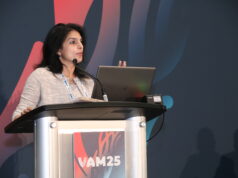
Patients categorized as living in neighborhoods with high levels of disadvantage under the Area Deprivation Index (ADI) measure of community adversity have more advanced peripheral arterial disease (PAD) and lower rates of revascularization versus amputation, a new retrospective analysis of Vascular Quality Initiative (VQI) data demonstrates.
The study, led by senior author Marc Schermerhorn, MD, chief of vascular and endovascular surgery at Beth Israel Deaconess Medical Center in Boston, showed patients residing in the most disadvantaged zip codes were less likely to present with claudication, more likely to report rest pain, and less likely to undergo a revascularization for their PAD than those who live in areas classed as having the lowest levels of deprivation.
The ADI is composed of five quintiles, with the 5th the most deprived.
Adjusted analysis showed patients in the 5th ADI quintile being twice as likely to undergo intervention for rest pain rather than claudication, and 40% less likely to undergo revascularization compared to those in the first quintile, according to the analysis.
The data were presented at the 2022 Vascular Annual Meeting (VAM) in Boston (June 15–18) by Lucas Mota, MD, a Beth Israel Deaconess general surgery resident.
The research included nearly 80,000 patients who received open and endovascular infrainguinal revascularization or amputation from 2003–2020. The investigators established that 5th quintile patients were younger, with a mean age of 65, and more likely to be Black, have comorbidities, be former smokers or current smokers, and be uninsured.
Mota said the ADI was selected as a better measure of the underlying social determinants of health related to neighborhood conditions rather than simply a focus on individual factors such as race, income and insurance status. “Attention needs to be given to understanding neighborhood factors that are contributing to these disparities in order to identify community-level targets for improvement,” Mota told VAM 2022.











